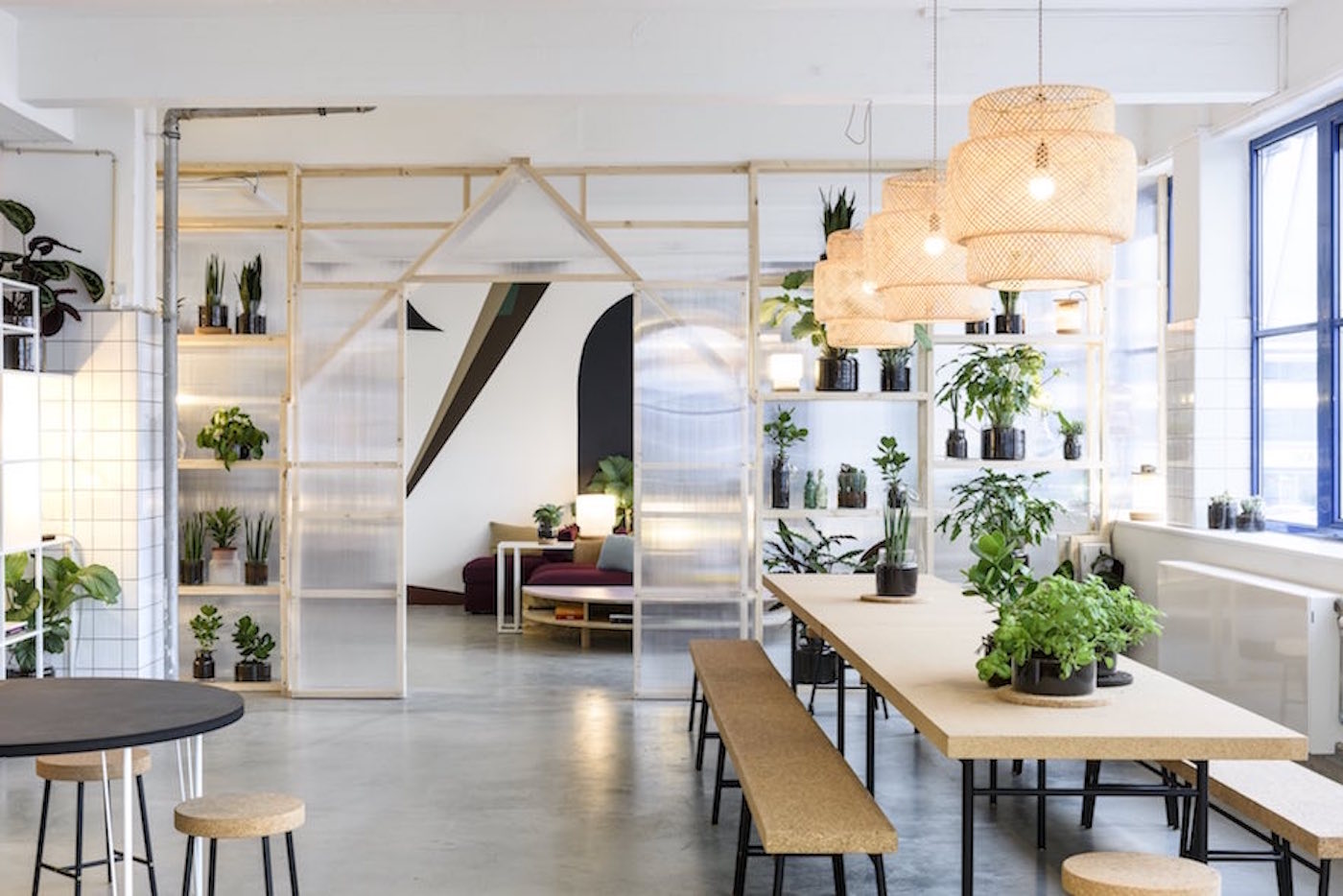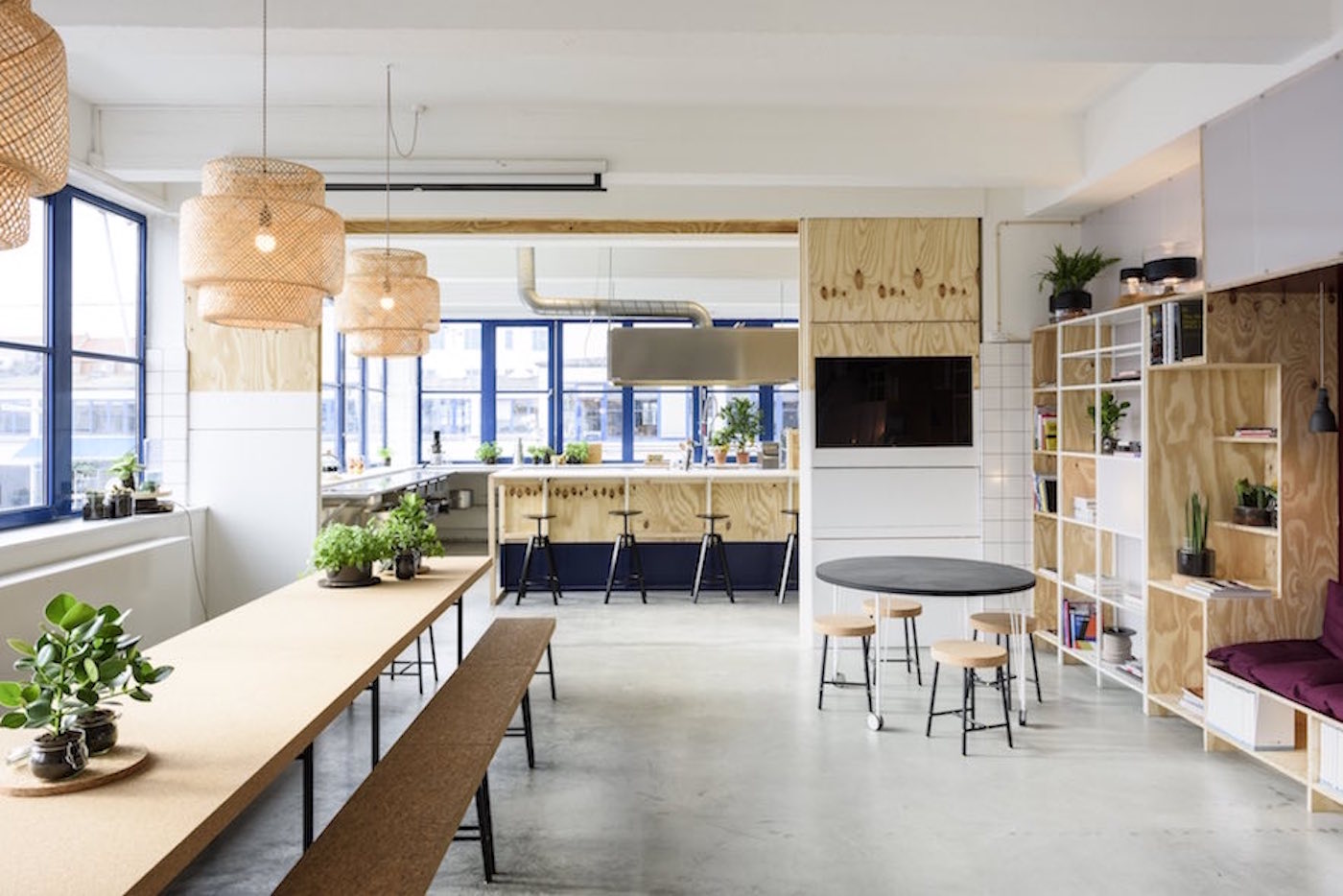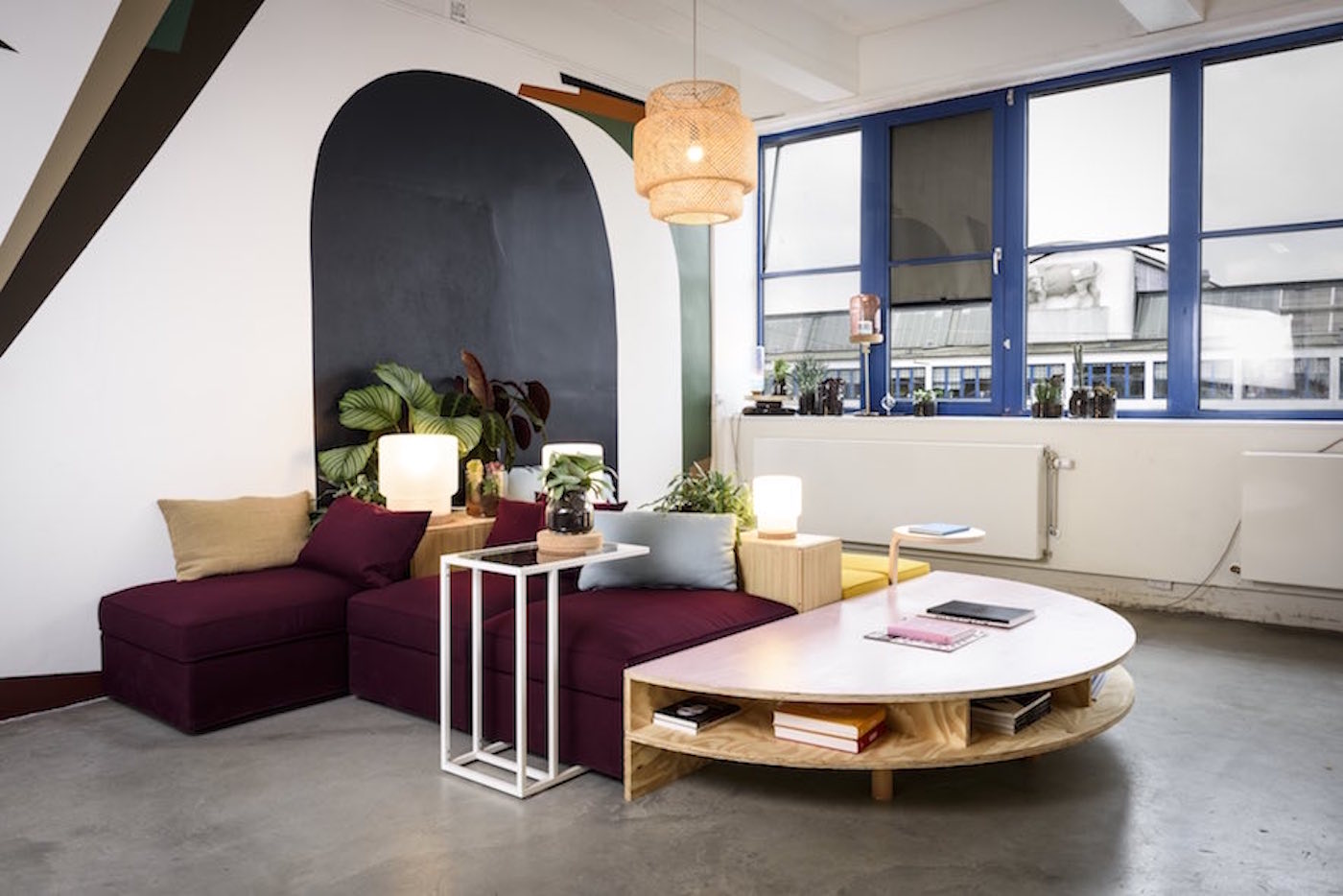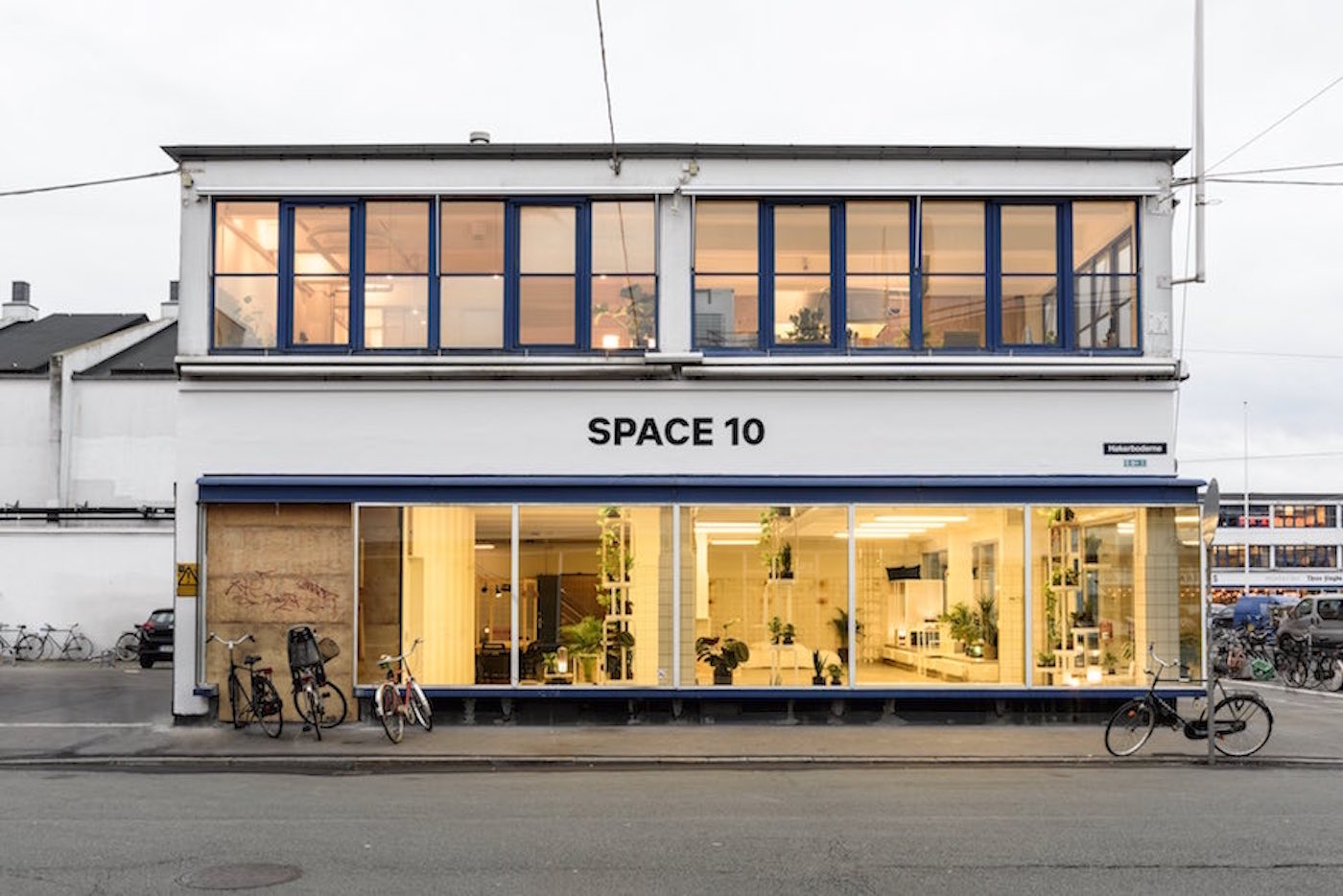Your Cart is Empty
Buy a book, plant a tree.
The Initiator of Danish Creative Hub Space10 Let’s Us Know Why Communal Spaces Matter

With its open floorplan and warm lights, Copenhagen’s Space10 is an oasis for artists, designers, scientists, and more. A vibrant energy flows through the communal hub, which is home to an ever-changing rotation of events, lectures, workshops, and other opportunities for a free-flowing exchange of ideas. We spoke with director Carla Cammilla Hjort about how Space10 reflects into the Scandinavian mentality and why community is critical in the age of urbanization. Read our interview with the intradisciplinary instigator below, or find out more in our new book Scandinavia Dreaming.
The follow-up to our best-selling title Northern Delights, the book chronicles the new design and interior innovations from up north. Browse and buy Scandinavia Dreaming.


Why are communal spaces important?

Communal spaces are crucial. Expanding populations, advanced urbanization, and rising housing prices results in smaller housing units. This mean our shared communal spaces becomes more and more important for all of us. the local cafe has become our new living room.
We need to realize the importance of our built environments because it can either improve or diminish our everyday sense of well-being. We need to focus on making shared spaces that people love to be in and create the framework for a safe, vibrant, active, appealing, healthy, and sustainable life by activating the designs and architecture of the neighborhoods in which we live.



How can a shared space create a change within a community?
I am really fascinated with the idea of the Fab City movement, which is a new model that challenges how we view the cities we live in and which will allow citizens to play a different role in their communities: citizens are viewed as more than consumers—we can become producers of our own cities and our everyday needs and aspirations.
The idea of a Fab City is based on taking advantage of the technological breakthroughs we have experienced in recent years to move production back into cities: our industrial production, our production of food, and our production of energy, for example. This idea has paved the way for a new era of decentralization in which local communities are more empowered and more self sufficient. Spaces for makers and fab-labs are mushrooming in every bigger city; urban farms and community gardens are popping up all around the world, as is locally-produced green energy. We are on the vanguard of creating locally productive, globally connected, self-sufficient cities, which really excites me.


How does Space10 reflect Scandinavian design and the Scandinavian mentality?
I've always appreciated Danish and Nordic design traditions and aesthetics. I think our love for simplicity, clean lines, and quality has influenced my own design aesthetic and I am a big fan of Danish designers such as Wegner, Børge Mogensen and Arne Jacobsen.
It is important to state that Space10 is not working with furniture design—we are solely exploring areas outside IKEA’s core business, which means we look at designing new business models and concepts for IKEA that enable a better and more sustainable everyday life for the many people—here the Scandinavian mentality is really present.
Scandinavian values are about human rights, equality, dignity, democracy, trust, happiness, and an overall emphasis on humanism and fairness. Even though we are an international team, we share these Scandinavian values at Space10: we put humans first. We want to help humans thrive. We want to make life better, simpler, more sustainable, safe, equal, playful, and—most importantly—meaningful. We believe that together we can create a better everyday life for the many people, and that it's the sum of the many small initiatives that will eventually make a big impact.


While studying to become a meditation teacher and a body therapist, what surprised you?
I actually didn’t set out to become either. Rather, I went traveling in search of the bigger answers in life: “Why am I here?” and “What is the meaning of my life?”, mainly. On that journey, I reached a point of great confusion which led me to begin working with a body therapist in Thailand. I was completely overwhelmed by how profound this experience was to me and it really helped me understand myself on a much deeper level. After having gone through three months of therapy myself I decided to move to India, where I lived in an ashram for one year. While I was in the ashram I also began getting into all kinds of different meditation techniques and I fell in love with dance meditation and began leading such sessions too.
I guess what surprised me the most was to feel and experience the positive impact it had not only on my mind but also my entire way of living. I reached a point where I felt completely aligned with my inner dreams and aspirations and how I was living my life. Since then, I have used both meditation and body therapy as a way to stay stress-free and keep living in that alignment. It’s created clarity and confidence in me that I wouldn’t change for anything in the world.
What have you learned from facilitating a wide variety of lessons and lectures at Space10?
I’ve always loved facilitating and teaching because it can move people toward new thoughts and perspectives and—even better—toward action. The most powerful thing to do is to make people look within and have them figure out what truly motivates them and figure out how they can design a life that makes not only their life better, but also the world a bit better. I don’t really believe that we can find the solutions to the world’s greatest problems, but I believe that if we begin with ourselves, we can at least offer something to those around us and, perhaps, then also deal with bigger issues from a place of more clarity and drive.
How can large-scale organizations and businesses have a positive impact on local and global communities?
I think there are endless answers. I hope that many more companies will begin to figure out how to move from being purely capital and consume-driven to being much more sustainable businesses that value social empowerment. At Space10, we tap into IKEA’s vision of “creating a better everyday life for the many people”, then ask ourselves how we could do that in new ways in the future. Personally, I would love to see a future where big companies and organizations feel responsible for designing socially-empowering futures while also investing in circular transformations. I believe that trends like the maker movement, food-producing architecture like urban farming, and sharing economy models like Airbnb hold a lot of the answers to how we can disrupt the outdated linear culture of take, make, use, and dispose. Supporting and tapping into these trends can be one way for big brands and organizations to have a positive impact on both local and global communities.
When working on a new and innovative project, how do you overcome your fear or failure?
I actually have a very good approach to avoid fear and that is to not believe in failure in the first place. I decided many years ago that I did not want to be driven in any shape or form by fear and if I catch myself doing it I immediately have to challenge myself. Whenever we fail, we learn. That is the beauty of life: we live to learn and from those learnings grow as human beings. Of course you see a lot of people who haven’t found a way to deal with their fears in life and, for many people, a so-called failure can unfortunately lead to paralysis and the inability to take risks in the future. It’s important that we teach kids that taking risks and failing is as important in life as succeeding.
What is on the horizon for you and your many projects? What exciting events, lessons, and festivals are coming up.
We have a lot of new exciting projects and labs coming up now. We have set up a lab called The Farm which is exploring and experimenting with architecture for producing food both within Space10 but also at other communal spaces. For example, we just did a cool project called the Grow Room at CHART. We also have another new lab called The Makery, where we are setting up a very cool space for makers in our basement to explore the future of manufacturing and how we can build new circular business models around maker spaces while also exploring the social empowering aspects of digital fabrication tools. We have a lot of really exciting residencies coming up, one of them being with precious plastic from the Netherlands—they’re setting up a DIY recycling station at Space10 to explore further how to turn plastic waste into new raw materials. We’ll also have bio hackers working with growing materials and architects looking into how we can use digital fabrication to explore a modular approach to design and architecture. For those who are interested, follow us on Space10.io.